Scholars skeptical about 'Jesus tomb' film claims
Updated Mon. Feb. 26 2007 11:36 PM ET
CTV.ca News Staff
http://www.ctv.ca/servlet/ArticleNews/story/CTVNews/20070226/jesus_tomb_060226/20070226?hub=TopStories
Religious scholars have wasted no time attacking the claims of filmmakers who say that 10 small caskets discovered in 1980 may have held the bones of Jesus Christ and his family.
"I don't think that Christians are going to buy into this," said biblical scholar Stephen Pfann, who was interviewed in the forthcoming documentary The Lost Tomb of Jesus. "But skeptics, in general, would like to see something that pokes holes into the story that so many people hold dear."
"How possible is it?" Pfann said. "On a scale of one through 10 -- 10 being completely possible -- it's probably a one, maybe a one and a half."
Michele Piccirillo of the Franciscan Archeological Institute said: "Before, archeology was used to do politics. Now archeology is just to do money."
He also added, 'There are some people interested in destroying the faith of others and that's not good.'
John Marshall, a religious studies professor at the University of Toronto, said he'd like to know how a family from Galilee would have ended up being buried in Jerusalem.
"To persuade me of these claims, I'd want to know that the names are as old as the boxes, that the characters named on the boxes are the characters we know from Christianity ... and we would want to know the DNA evidence is uncontaminated," he told CTV.
"Beyond this, we would want to know how a married Jesus can be reconciled with Jesus teaching against sexual activity."
Oscar-winning director James Cameron defended his controversial new documentary against allegations the film was trying to undermine Christianity.
"I think there will certainly be those that will say we are attempting to in some way undermine Christianity, but that's really very, very far from the case," Cameron said at a Monday morning press conference in New York announcing the documentary.
Instead, the documentary that follows the discovery of the tomb of Jesus Christ and his family celebrates their existence, Cameron said.
"What this film and the investigation that the film shows is able to bring to light is for the first time, tangible, physical, archeological and in some cases, forensic evidence, that can be analyzed scientifically in the same manner that one would in a criminal investigation in terms of DNA evidence," Cameron said.
The message that Jesus delivered 2,000 years ago resounds even today, said Cameron, the documentary's producer.
"My feeling is that his message of compassion, humility, love and forgiveness is every bit as much needed now in this divisive, materialistic and war-torn world," said Cameron, who won the Academy Award for Best Director in 1998 for Titanic.
In their documentary, Cameron and the director, Canadian filmmaker Simcha Jacobovici, say that the tomb of Jesus Christ and his family has been found, a claim that would have profound implications for the Christian faith.
"This has been a three-year journey that seems more incredible than fiction," Jacobovici, an Emmy-award winning filmmaker, said earlier. "The idea of possibly finding the tomb of Jesus and several members of his family, with compelling scientific evidence, is beyond anything I could have imagined."
The film suggests that ossuaries once containing the bones of Jesus and his family are now stored in a warehouse belonging to the Israel Antiquities Authority in Bet Shemesh, outside Jerusalem.
The tomb where the remains were found was unearthed in the Talpiot neighbourhood of Jerusalem during the construction of an apartment building in 1980.
CTV's Middle East Bureau Chief Janis Mackey Frayer described the site as a concrete slab in the ground behind an apartment building, which is about half-a metre by one-metre in size.
During the excavation, archeologists found 10 ossuaries and three skulls. Six of the ossuaries had names inscribed into them: Jesus son of Joseph, Judah son of Jesus, Maria, Mariamne, Joseph and Matthew.
At the time, the finding raised few alarms, as these had been very common names at the time of Jesus.
According to Cameron and Jacobovici, the bones discovered in the limestone boxes in 1980 were quickly reburied, following the Jewish traditions.
Years later, a BBC crew that stumbled across the collection in a store room belonging to the Israeli Antiquities Authorities began work program that focused on the tomb.
Jacobovici's documentary uses scientific methods, including DNA testing, statistical analysis and forensic examination not available to the BBC 11 years ago.
If the claims are correct, and the tombs belonged to the holiest family in Christendom, the discovery could shake the foundations of the Christian faith with the speculation that Jesus fathered a child with Mary Magdalene.
Canadian scientists worked on project
DNA tests conducted for the documentary at Lakehead University on two ossuaries -- one inscribed Jesus son of Joseph and the other Mariamne, or Mary -- confirm that the two were not related by blood, so they were likely married.
"Perhaps Jesus and Mary Magdalene were married as the DNA results from the Talpiot ossuaries suggest and perhaps their union was kept secret to protect a potential dynasty - a secret hidden through the ages," narrator Ron White says in the documentary.
"A secret we just may be able to uncover in the holy family tomb."
Traditional Christian beliefs maintain that Jesus was physically resurrected to heaven while more liberal interpretations have permitted for a spiritual ascension.
Church representatives and archeologists reject the claims of the documentary.
"The historical, religious and archaeological evidence show that the place where Christ was buried is the Church of the Resurrection," Attallah Hana, a Greek Orthodox clergyman in Jerusalem, told The Associated Press.
The documentary, he said, "contradicts the religious principles and the historic and spiritual principles that we hold tightly to."
Pfann is even unsure that the name "Jesus" on the caskets was interpreted properly. He thinks it is more likely the name "Hanun," as ancient Semitic script is notoriously difficult to decipher.
Jacobovici has said the findings should not threaten anyone's belief in the resurrection, as he does not argue that Jesus did not ascend to heaven at least spiritually.
But critics say the theory holds no merit.
Amos Kloner, professor at Israel's Bar-Ilan University, who was the archeologist who first revealed the discovery, believes the cave and its contents hold no significance.
Kloner told CTV that the names found on the tombs are common ones at the time.
"These are the most common names among Jews in these centuries," said Kloner, who published his findings in 1996.
"It's very interesting," he said of all of the names of Jesus' family being found on ossuaries in the same cave, "but it's not a convincing proof that it's the family of Jesus." He knows of at least two other ossuaries that bear the name of Jesus, son of Joseph.
Calculating the odds
In the documentary, University of Toronto statistician Andre Feuerverger calculates that the chances of the names being found together are 600 to one.
He said that the Maria on one of the ossuaries is the mother of the Jesus found on another box, that Mariamne is his wife and that Joseph -- inscribed as the nickname Jose -- is his brother.
Jesus' mother was known after his death as Maria, the Latin form of Mary, as more Romans became followers. Mariamne is the Greek form of Mary. Mary Magdalene is believed to have spoken and preached in Greek. Jose was the nickname used for Jesus' little brother.
Furthermore, the tomb is the only site where ossuaries have been found with the names Mariamne and Jose, the documentary's creators claim.
Another famous ossuary, inscribed "James, son of Joseph. brother of Jesus," is also featured in the documentary.
Of the 10 ossuaries found at Talpiot, one later went missing. Many experts have speculated the coffin is that of James, which was put on public display at the Royal Ontario Museum.
Furthermore, forensic testing of the patina on the Jesus ossuary and that of James concluded they came from the same tomb.
Feuerverger says that if James is added to the equation, there is a 30,000 to one chance that the Talpiot Tomb belonged to Jesus' family.
Another calculation, commissioned by James Tabor, chair of the department of religion studies at the University of North Carolina, puts the odds at one in 42 million.
Archaeologists balk at the filmmaker's claim that the James Ossuary might have originated from the same cave.
In 2005, Israel charged five suspects with forgery in connection with the infamous bone box.
"I don't think the James Ossuary came from the same cave," Dan Bahat, an archaeologist at Bar-Ilan University told AP. "If it were found there, the man who made the forgery would have taken something better. He would have taken Jesus."
The $4-million documentary will air on Canada's Vision TV on March 6 and two days earlier on Discovery U.S.
The companion book, The Jesus Family Tomb (HarperCollins) by Jacobovici and Charles Pellegrino, has just been released.

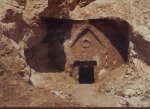
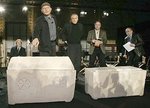






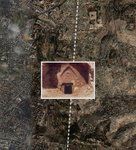


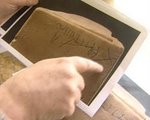






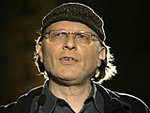

















No comments:
Post a Comment